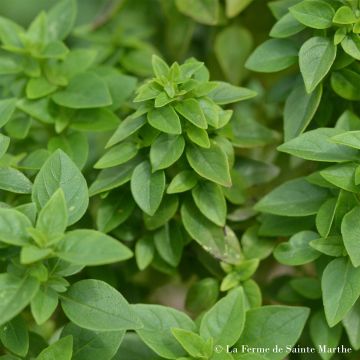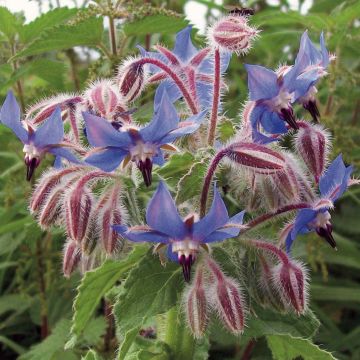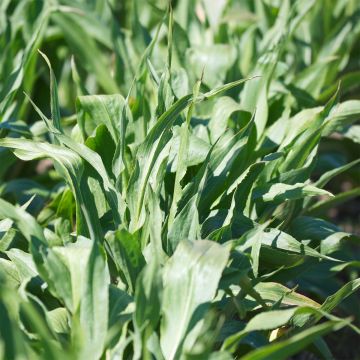

Allium ursinum


Allium ursinum
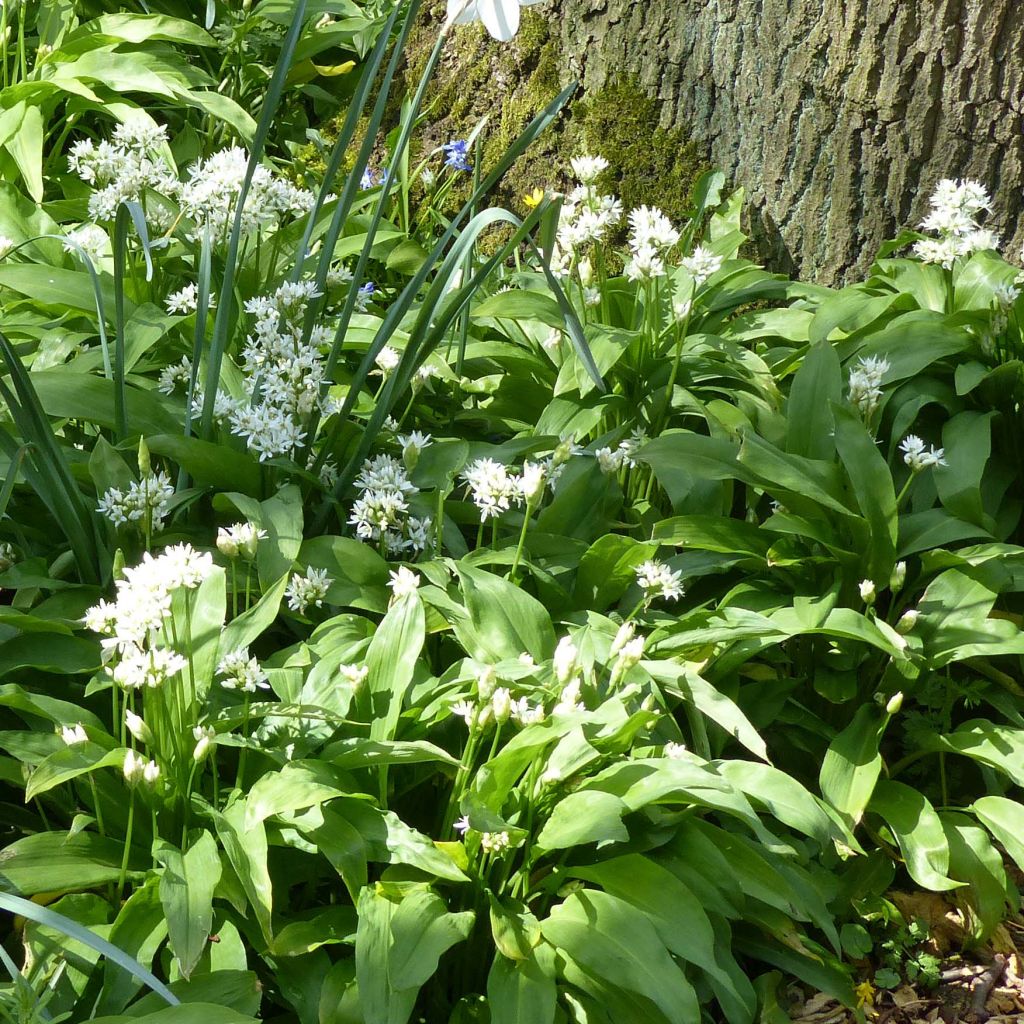

Allium ursinum
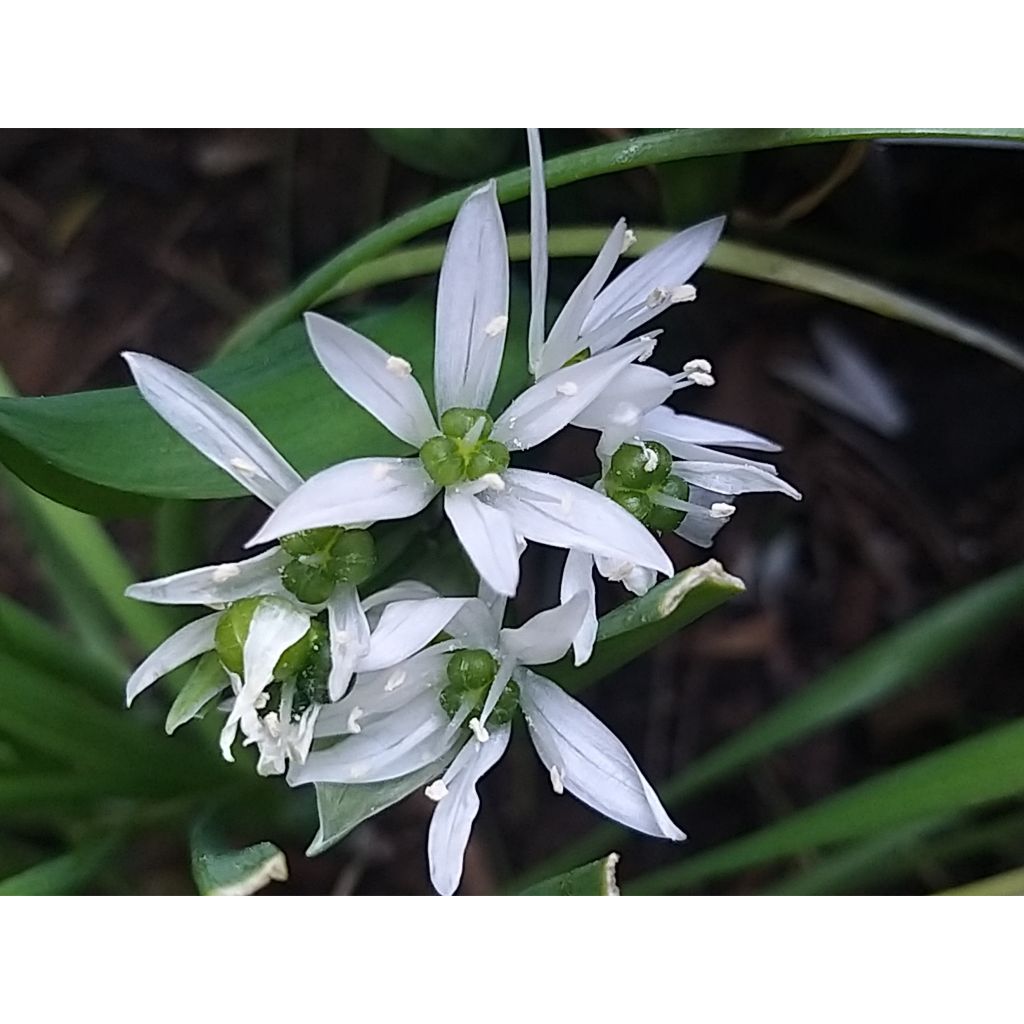

Allium ursinum
Allium ursinum
Allium ursinum
Ramsons, Wild garlic, Broad-leaved garlic, Wood garlic, Bear's garlic
Somewhat disappointed, I ordered a packet of seeds of around 100 seeds, there are exactly 28 seeds and some seem to be broken in half.
Kevin, 09/01/2025
This item cannot be shipped to the selected country
Dispatch by letter from €3.90
More information
Schedule delivery date,
and select date in basket
This plant carries a 6 months recovery warranty
More information
We guarantee the quality of our plants for a full growing cycle, and will replace at our expense any plant that fails to recover under normal climatic and planting conditions.
Seed-only orders are dispatched by sealed envelope. The delivery charge for seed-only orders is €3.90.
Description
Allium ursinum, known as wild garlic, is a perennial that grows spontaneously in woodlands. It is cultivated for its bulb, leaves, and flower buds, which are used as condiments to enhance dishes. It has large, narrow, shiny green leaves and displays a charming flowering in white umbels from April to June. Sow seeds from July to September and from February to March for a harvest from January to October.
Wild garlic is a European species that grows spontaneously in woodlands. It belongs, like cultivated garlic, to the Amaryllidaceae family. It is perennial and hardy, at least down to -15°C (5°F). It is a bulbous plant, with a spiky habit, growing 15 to 20cm (6 to 8in) tall. It has narrow, petiolate leaves at the base of its stem. It flowers from April to June (depending on the region) in spherical white umbels that are slightly yellowish. It is a deciduous plant that completely disappears in winter and reappears in spring.
All parts of the plant are edible: the bulb, the flower buds, and the leaves. It can be cooked as a vegetable, like spinach, or used as a condiment to enhance salads, and soups, etc. Wild garlic can also be used to prepare infusions.
Allium ursinum has numerous virtues: it contains a lot of vitamin C, it is detoxifying, hypotensive, and antiseptic, among other things.
In the garden, wild garlic thrives in shade or partial shade in humiferous soil that is rather moist but well-drained. It can be planted in the vegetable garden as well as in shaded areas of the garden where it forms a beautiful ground cover.
Harvest: it can be harvested over a long period, from January to October. But don't be too greedy, as it reproduces through its bulbs, so it is important to leave some in place to see it multiply.
Storage: the leaves can be preserved by drying them in a dark and dry place.
Gardener's tip: before its characteristic flowering, wild garlic can be mistaken for several highly toxic plants such as lily of the valley, autumn crocus, and arum. Wait a bit or trust your nose: only Allium ursinum gives off a garlicky smell.
Note: Wild garlic is a bulbous plant that goes dormant in late spring. Its green foliage gradually turns yellow and disappears at the end of spring, only to reappear in late winter.
Report an error about the product description
Allium ursinum in pictures


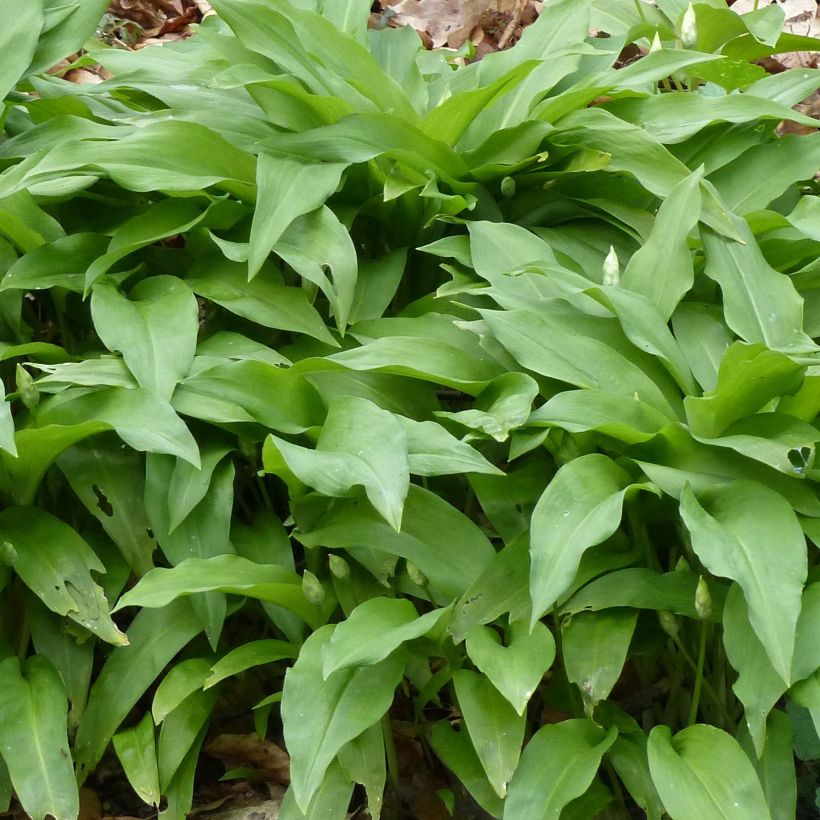



Harvest
Plant habit
Foliage
Botanical data
Allium
ursinum
Alliaceae
Ramsons, Wild garlic, Broad-leaved garlic, Wood garlic, Bear's garlic
Central Europe
Perennial
Other Herb seeds
Planting and care
Sowing:
Sow wild garlic from July to September and from February to March, at a temperature of around 15 to 20°C (59 to 68°F), ideally in a nursery or in a tray filled with good sowing compost and equipped with good drainage. Germination can take a few weeks.
When the seedlings have reached the 4-leaf stage, transplant them into pots or directly into the ground in spring or autumn, leaving a space of 15cm (6in) between plants. Shade or semi-shade is necessary for this garlic.
Cultivation:
Wild garlic requires no care. It naturalises easily.
Seedlings
Care
Intended location
-
, onOrder confirmed
Reply from on Promesse de fleurs
Vegetable seeds
Haven't found what you were looking for?
Hardiness is the lowest winter temperature a plant can endure without suffering serious damage or even dying. However, hardiness is affected by location (a sheltered area, such as a patio), protection (winter cover) and soil type (hardiness is improved by well-drained soil).

Photo Sharing Terms & Conditions
In order to encourage gardeners to interact and share their experiences, Promesse de fleurs offers various media enabling content to be uploaded onto its Site - in particular via the ‘Photo sharing’ module.
The User agrees to refrain from:
- Posting any content that is illegal, prejudicial, insulting, racist, inciteful to hatred, revisionist, contrary to public decency, that infringes on privacy or on the privacy rights of third parties, in particular the publicity rights of persons and goods, intellectual property rights, or the right to privacy.
- Submitting content on behalf of a third party;
- Impersonate the identity of a third party and/or publish any personal information about a third party;
In general, the User undertakes to refrain from any unethical behaviour.
All Content (in particular text, comments, files, images, photos, videos, creative works, etc.), which may be subject to property or intellectual property rights, image or other private rights, shall remain the property of the User, subject to the limited rights granted by the terms of the licence granted by Promesse de fleurs as stated below. Users are at liberty to publish or not to publish such Content on the Site, notably via the ‘Photo Sharing’ facility, and accept that this Content shall be made public and freely accessible, notably on the Internet.
Users further acknowledge, undertake to have ,and guarantee that they hold all necessary rights and permissions to publish such material on the Site, in particular with regard to the legislation in force pertaining to any privacy, property, intellectual property, image, or contractual rights, or rights of any other nature. By publishing such Content on the Site, Users acknowledge accepting full liability as publishers of the Content within the meaning of the law, and grant Promesse de fleurs, free of charge, an inclusive, worldwide licence for the said Content for the entire duration of its publication, including all reproduction, representation, up/downloading, displaying, performing, transmission, and storage rights.
Users also grant permission for their name to be linked to the Content and accept that this link may not always be made available.
By engaging in posting material, Users consent to their Content becoming automatically accessible on the Internet, in particular on other sites and/or blogs and/or web pages of the Promesse de fleurs site, including in particular social pages and the Promesse de fleurs catalogue.
Users may secure the removal of entrusted content free of charge by issuing a simple request via our contact form.
The flowering period indicated on our website applies to countries and regions located in USDA zone 8 (France, the United Kingdom, Ireland, the Netherlands, etc.)
It will vary according to where you live:
- In zones 9 to 10 (Italy, Spain, Greece, etc.), flowering will occur about 2 to 4 weeks earlier.
- In zones 6 to 7 (Germany, Poland, Slovenia, and lower mountainous regions), flowering will be delayed by 2 to 3 weeks.
- In zone 5 (Central Europe, Scandinavia), blooming will be delayed by 3 to 5 weeks.
In temperate climates, pruning of spring-flowering shrubs (forsythia, spireas, etc.) should be done just after flowering.
Pruning of summer-flowering shrubs (Indian Lilac, Perovskia, etc.) can be done in winter or spring.
In cold regions as well as with frost-sensitive plants, avoid pruning too early when severe frosts may still occur.
The planting period indicated on our website applies to countries and regions located in USDA zone 8 (France, United Kingdom, Ireland, Netherlands).
It will vary according to where you live:
- In Mediterranean zones (Marseille, Madrid, Milan, etc.), autumn and winter are the best planting periods.
- In continental zones (Strasbourg, Munich, Vienna, etc.), delay planting by 2 to 3 weeks in spring and bring it forward by 2 to 4 weeks in autumn.
- In mountainous regions (the Alps, Pyrenees, Carpathians, etc.), it is best to plant in late spring (May-June) or late summer (August-September).
The harvesting period indicated on our website applies to countries and regions in USDA zone 8 (France, England, Ireland, the Netherlands).
In colder areas (Scandinavia, Poland, Austria...) fruit and vegetable harvests are likely to be delayed by 3-4 weeks.
In warmer areas (Italy, Spain, Greece, etc.), harvesting will probably take place earlier, depending on weather conditions.
The sowing periods indicated on our website apply to countries and regions within USDA Zone 8 (France, UK, Ireland, Netherlands).
In colder areas (Scandinavia, Poland, Austria...), delay any outdoor sowing by 3-4 weeks, or sow under glass.
In warmer climes (Italy, Spain, Greece, etc.), bring outdoor sowing forward by a few weeks.


































